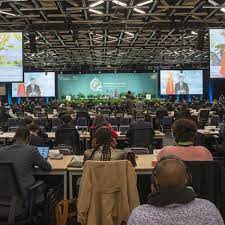COP15 ended with a hug biodiversity agreement, but will it succeed? Well that it is a hard question to answer, but I thought that 3 months after its signing, it would be worth returning to it and looking at what was promised!

I should at this point note, that while this website is not yet successfully meeting its aims, should it succeed, I hope it can be part of the solution. The problem in most places, is that it is a trade-off between a chunk of money now, or the possibility however small of some money regularly starting some time in the future. This website aims to make this future time NOW, by giving people a way to advertise their little wilderness, and have paying visitors make its conservation financially useful.
So what did COP 15 agree?
4 main overarching global goals
- Halting human-induced extinction of threatened species and reducing the rate of extinction tenfold by 2050
- Sustainable use and management of biodiversity (thereby recognizing biodiversity’s positive impact on people), maintained and valued and enhanced
- Fair sharing of the utilization of genetic resources and digital sequence information
- A way to make sure that all these targets are accessible by all parties including least developed countries and small islands
This website is specifically aimed at point two, though by giving local communities across the world a way to profit from the wildlife on their doorstep, we aim to make point one an obvious good business choice (if you can make regular money from wildlife on your doorstep why would you destroy it).
There was also a range of 23 targets to be met by 2030 eight of which are listed below
- Conservation and management of at least 30% of land and sea by 2030, currently 17% of land is protected and 8% of marine, so a great deal to do in 7 years
- Restoration of 30% of land and sea (essentially make sure that the above protected areas are as they should be
- Reduce to near zero, the loss of areas of high biodiversity importance and high ecological integrety
- Halve global food waste – this will have a big impact on the amount of space that is needed to feed the human race, thereby leaving more space for biodiversity
- Phase out or reform subsidies that harm biodiversity (currently thought to come to 500 billion a year) while increasing incentives for biodiversity conservation and sustainable use (these are often found to have a positive impact on farming efficiency anyway
- Mobilize $200 billion a year for biodiversity funding
- Increase funding flowing from developed to developing countries to at least $30 billion a year (investments etc)
- Requiring transnational companies and financial institutions to monitor asses and transparently disclose impacts on biodiversity through what they do (thereby allowing customers to avoid any business that is working against humanities interests)
Importantly, COP15 looked at finance. Most of the remaining biodiversity is in the developing world, with the majority in the developed world already lost. Therefore, while the developed world must look to improve the biodiversity in their own countries, they also agreed to start sending significant money to developing countries to help them meet the cost of the conservation that the whole world needs so much.












Best view i have ever seen !